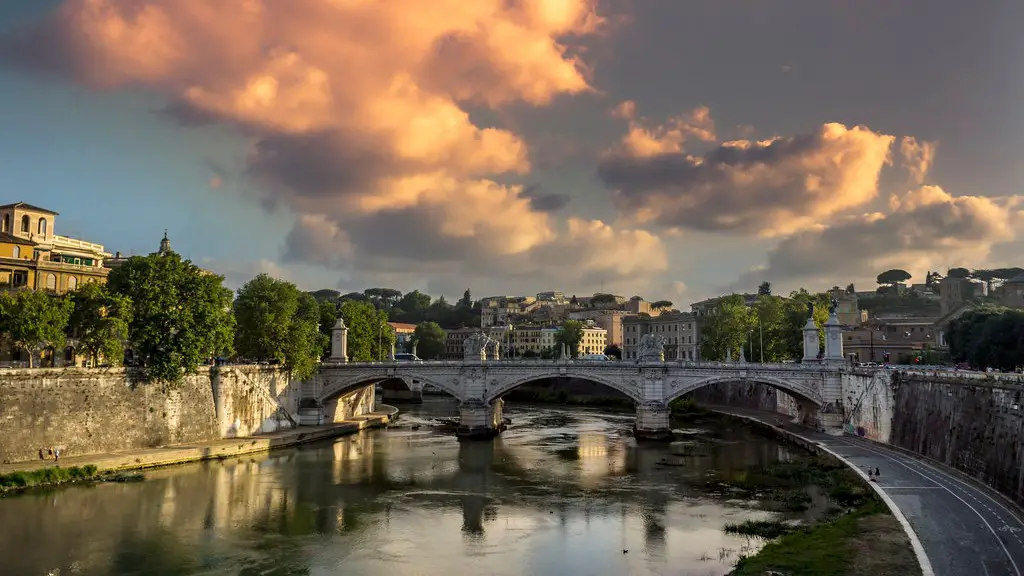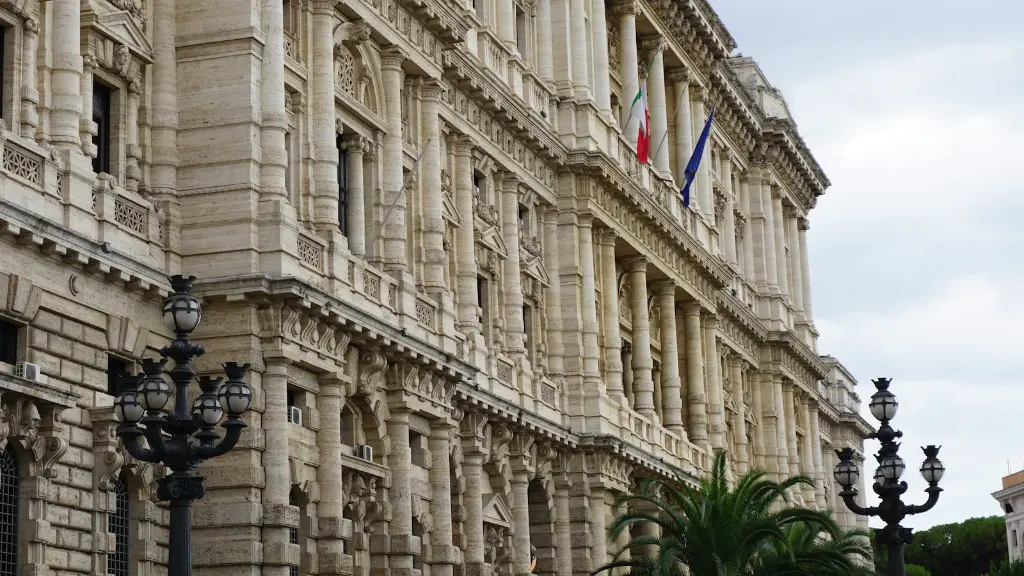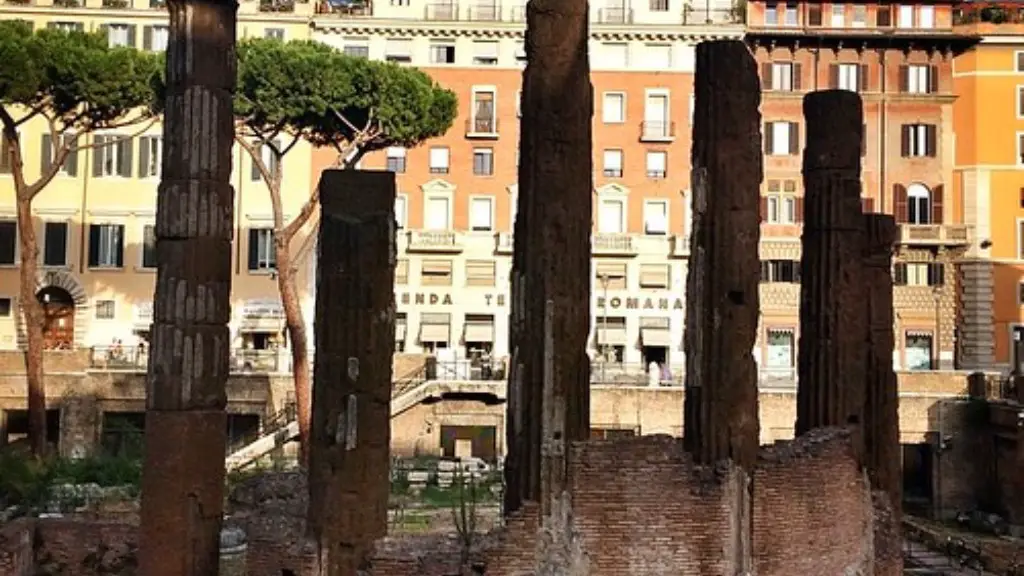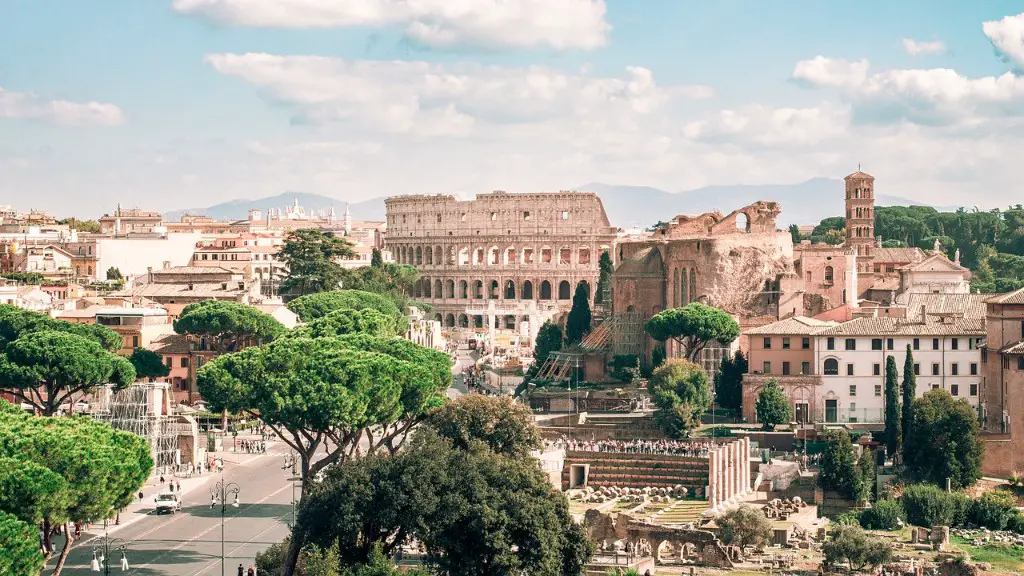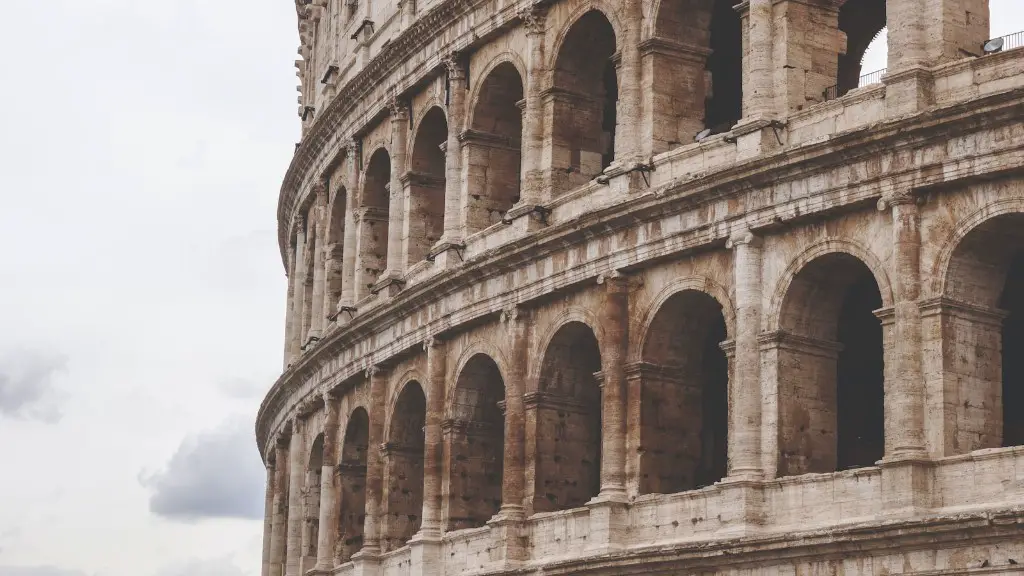What is the Center of Ancient Rome?
Rome, the capital of modern-day Italy and one of the most powerful empires of its day, was founded in 753 BC. But what is the center of ancient Rome? Each era has its own monumental points, buildings, and purpose so the center of Rome changes often.
The Roman Forum is generally known as the most important public space of ancient Rome. Located between the Palatine and Capitoline Hills, it was the center of politics and law for centuries, hosting the city’s most important temples and government buildings. At its peak, it was the bustling heart of Roman life and civil society.
The Colosseum, built between 72 and 80 AD, is considered a defining symbol of Rome and its place in history. One of the most renowned monuments of the Roman Empire, it was the center of entertainment for years, hosting gladiatorial games, mock sea battles, chariot races, executions, and theatrical performances.
The Pantheon is another important monument, built between 126 and 128 AD during the reign of the Emperor Hadrian. It was the temple dedicated to all the gods of Rome and remains one of the best preserved ancient buildings in the world. Mass was conducted within the Pantheon and it was known as the center of Roman religion.
Circus Maximus, built around 6 BC and expanded by Julius Caesar in 46 BC, was the largest stadium in ancient Rome with a seating capacity of over 150,000 spectators. It was the center of chariot racing and special events, showcasing races and processions for months on end.
The Capitoline Hill is another important site, the meeting place of Rome’s most powerful political representatives. It was the spiritual center of the Roman state and the host of ceremonies presided over by the emperor.
Vatican City is a recognized independent state, but it was also the center of the Roman Catholic Church for centuries and continues to serve as the spiritual home of over one billion Christians today.
While each of these sites had a unique purpose and took turns as the center of ancient Rome during different eras, they all stem from the same traditions and ideals. Together, they make up the rich history and culture that is Rome.
Political Role of the Forum
In ancient Rome, the Roman Forum was the main square or ‘agora’ of the city. It was the main political, religious, and civic centre of Rome and the main stage of public life. It was the setting of several historical events, such as the inaugural speeches of Roman emperors, political gatherings and demonstrations. As such, it was the centre of the political life of the Roman people. People from all social classes used the space to come together to meet, deliberate, negotiate, and discuss politics. Therefore, it was essential for the development of the Roman Republic and governance of Rome.
The Forum was the symbolic centre of power in the city, as most of the main buildings and monuments were located there. These buildings included the Senate house, the courts, the Rostra, the Curia Julia, the Forum of Julius Caesar, the Temple of Vesta, the House of the Vestal Virgins, the arch of Augustus, the temple of Antoninus and Faustina, the Arch of Septimius Severus, and the Temple of Peace, among others. All political life in Rome – from law-making to judicial verdicts – was centred around the Forum.
In its early history, the Grand Council of the Roman Senate met on the Forum. Election results and other announcements were made there. Later, during the Imperial periods, the Forum became less and less important in a political sense, as the powers of the Emperor increased and the Roman Republic ceased to exist.
Despite its political role, the Forum was also a religious centre. Religious rituals were conducted there and it was the home of several important religious temples and monuments. The main gods of the city had their own temple in the Forum, such as the Temple of Saturn and the Temple of Vespasian and Titus.
Thus, the Roman Forum was the most important space in the Roman city – both political and religious – and remains one of the most powerful symbols of ancient Roman life.
Cultural Significance of the Colosseum
Built in the first century AD, the Colosseum is one of the most iconic and recognizable structures of the Roman Empire. It was the venue for some of the most thrilling and popular entertainment events of ancient Rome: gladiatorial games and combat, mock sea battles, theatrical performances, and more. It was one of the largest amphitheatres ever built, with a seating capacity of over 50,000 people.
The Colosseum was built as a spectacle of power and wealth. Its sheer size and scale was meant to impress and intimidate, and to demonstrate the might of the Roman Empire. It was thus a symbol of imperial power and prestige and remains one of the most potent symbols of the Empire.
The Colosseum also had a profound cultural significance as it was the centre of entertainment and leisure activities, and a place where people from all walks of life could come together and enjoy the shows. People of all social classes and even slaves were allowed to attend, something that would have been unthinkable in other parts of the Roman world.
For many centuries, the Colosseum was the most popular attraction in Rome and it held the collective imagination of thousands of people. Its underground tunnels and chambers are testimony to the organisation and technological feats of the age. It was also the site for many momentous historical events, such as public executions, and the killing of over 5,000 Christians in 303 AD.
Today, the Colosseum is a UNESCO World Heritage Site and one of the most visited monuments in the world. It serves as a reminder of the grandeur and sophistication of the Roman Empire and is a timeless symbol of its culture and civilisation.
Religious Importance of the Pantheon
The Pantheon, located in the city of Rome, is one of the most well known and impressive buildings of the ancient world. This ancient temple was dedicated to ‘all gods’, and as such has had a significant religious importance since its construction in the 2nd century AD.
The construction of the Pantheon was commissioned by the Emperor Hadrian in 126 AD and it was originally dedicated to the emperor’s favourite gods: Jupiter, Venus, and Mars. It served as a temple to the gods, a place of worship and sacrifice, and a centre of civic and religious ceremonies.
The Pantheon’s architecture is stunning and it is known for its distinctive dome shape, a rarity in ancient structures. The building’s height is an impressive 43 metres and its dome remains the largest unsupported concrete dome in the world.
The interior of the Pantheon is striking. The primary focus is the cylindrical cella, surrounded by eight huge granite columns. These columns, dating back to the 6th century BC, were originally taken from the Temple of Apollo on the Palatine Hill. The cella is illuminated by more marble columns and also by two large bronze doors.
The Pantheon has also experienced several renovations over the centuries, and with each new period came a new religious purpose. During the Byzantine Empire, the Pantheon was transformed into a Christian basilica and many of the pagan sculptures were removed. It was also used as a burial place for important figures like Raphael, who was originally interred in the Pantheon.
Today, the Pantheon stands as one of the best preserved and iconic structures of the Roman Empire and serves as an important reminder of its religious and cultural heritage.
Historical Significance of Circus Maximus
Circus Maximus was the largest stadium in ancient Rome and held the largest number of spectators in the world at the time. It was built near the Tiber River and had a seating capacity of around 100,000 – 150,000 people.
Circus Maximus was the main venue for chariot racing, horse racing and events, and processions during the Roman Empire. It is estimated that over 12,000 chariots raced in the stadium over its lifetime.
Circus Maximus was built by Lucius Tarquinius Priscus, the first king of Rome, in the 6th century BC. It was then rebuilt by Julius Caesar in 46 BC and it was near Caesar’s residence, the Palatine Hill.
In the early years of the Empire, Circus Maximus was seen as a symbol of Roman greatness. It was the destination of many processions, such as the triumphal entry of victorious generals and Emperors, led by chariots and heralded by fanfare. It was also the site for public executions, where condemned criminals were thrown to their death or burned alive.
In 64 AD, the Great Fire of Rome destroyed much of the city, including Circus Maximus. This event left a lasting impression in the Roman psyche and it was thought to be a sign of the decline of the Empire by some.
Today, Circus Maximus is a ruin but still stands as a testament to the engineering feats of the ancient Romans and to the resilience of the early Empire.
Political Role of the Capitoline Hill
The Capitoline Hill is one of the original seven hills of Rome and has been a haunt of politicians for centuries. It has been the site of some of Rome’s most famous moments and the spiritual centre of Roman power and politics.
The origin of the Capitoline Hill is shrouded in legend. The hill is said to have been founded by the brothers Romulus and Remus after their quarrel for rulership of the city, and it is the place where Romulus was declared the first King of Rome.
In the Republican era, the Capitoline Hill was the centre of Roman politics. It was the meeting place of Rome’s most powerful political representatives, the Senate. The Senate, or the Curiate Assembly, was the governing body of Rome, composed of aristocrats and patricians. It was the site of the infamous confrontation between Julius Caesar and the Roman Republic in 49 BC, which sparked the beginning of the Roman Empire.
The Capitoline Hill also hosted other important events, such as grand celebrations and rituals presided over by the Emperor. In such ceremonies, the Emperor was the epicentre of power and he was surrounded by the few people of Rome that held authority.
The Capitoline Hill was thus a symbol of Roman political power both in the Republic and the Empire. Activity on the Hill represented a form of divine will, as it was believed that the gods weighed in on the decisions made in the Senate.
Today, the Capitoline Hill remains a symbol of Rome’s great history and continues to serve as a reminder of the origins of Western politics.
The Spiritual Heart of Vatican City
Vatican City, a sovereign independent state located in the heart of Rome, is best known as the spiritual home of the Catholic Church. It is the centre of religious life for over one billion Catholics and it has been a major force in the spiritual and cultural life of the city of Rome and the world.
Vatican City was founded in 1929 and it is the smallest independent city-state in the world. It is the residence of the Pope, the Catholic Church’s leader, and the site of St. Peter’s Basilica, the world’s largest and most influential church.
St. Peter’s Basilica is a magnificent building, with a breathtaking façade, glorious dome, and spacious interiors. It is home to numerous masterpieces of Renaissance and Baroque art, including the famous Michelangelo’s Pietà and Bernini’s Baldacchino.
In addition to religious ceremonies, Vatican City is also the home of several important archives and libraries, including the Vatican Secret Archives, containing documents that date as far back as the 8th century AD.
The Vatican is a symbol of religious and political power, and it continues to influence the spiritual life not only of Catholics but of people of other religions throughout the world. It stands as a testament to the cultural and spiritual importance of the Catholic Church, and to

